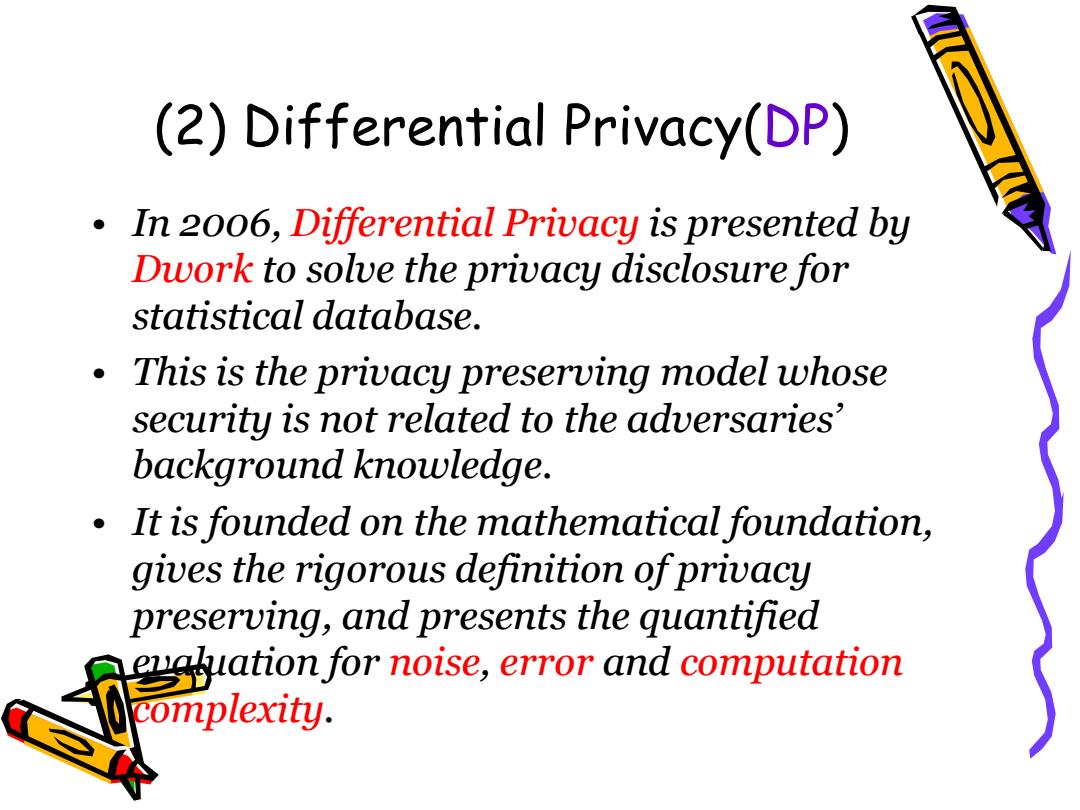
(2)Differential Privacy(DP) In 2006,Differential Privacy is presented by Dwork to solve the privacy disclosure for statistical database. This is the privacy preserving model whose security is not related to the adversaries background knowledge. It is founded on the mathematical foundation, gives the rigorous definition of privacy preserving,and presents the quantified iationfor noise,error and computation
(2) Differential Privacy(DP) • In 2006, Differential Privacy is presented by Dwork to solve the privacy disclosure for statistical database. • This is the privacy preserving model whose security is not related to the adversaries’ background knowledge. • It is founded on the mathematical foundation, gives the rigorous definition of privacy preserving, and presents the quantified evaluation for noise, error and computation complexity
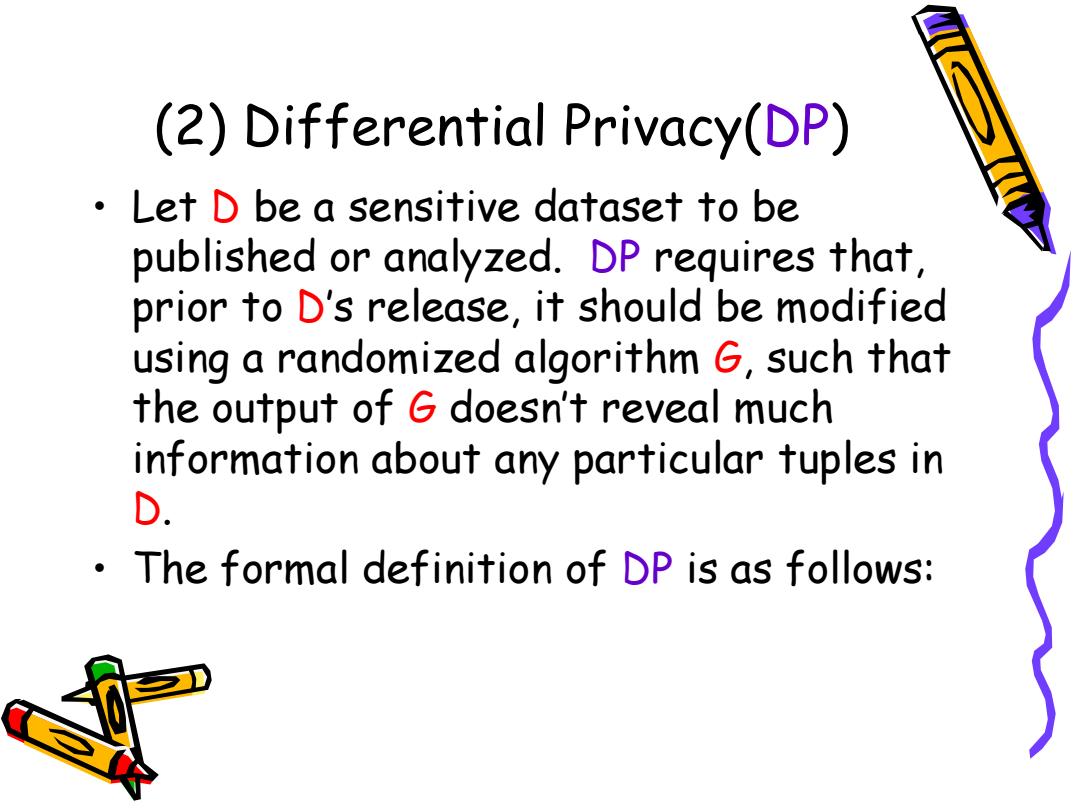
(2)Differential Privacy(DP) Let d be a sensitive dataset to be published or analyzed.DP requires that, prior to D's release,it should be modified using a randomized algorithm G,such that the output of G doesn't reveal much information about any particular tuples in D. The formal definition of DP is as follows:
• Let D be a sensitive dataset to be published or analyzed. DP requires that, prior to D’s release, it should be modified using a randomized algorithm G, such that the output of G doesn’t reveal much information about any particular tuples in D. • The formal definition of DP is as follows: (2) Differential Privacy(DP)
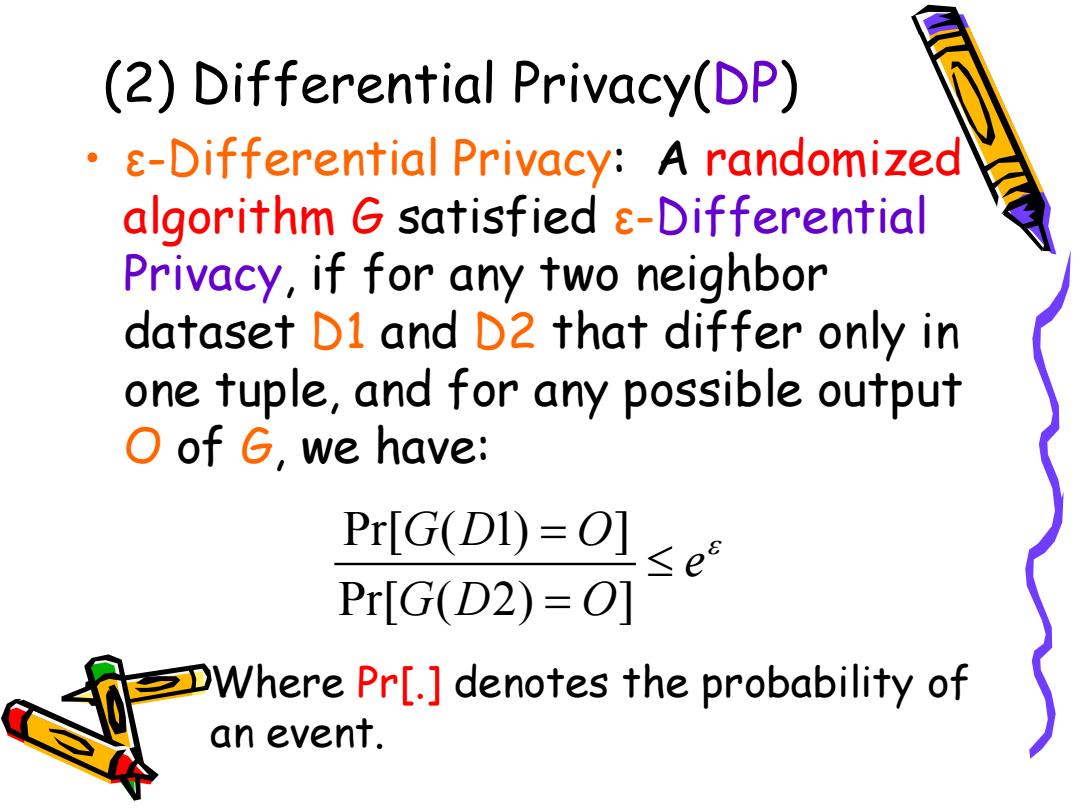
(2)Differential Privacy(DP) s-Differential Privacy:A randomized algorithm G satisfied &-Differential Privacy,if for any two neighbor dataset D1 and D2 that differ only in one tuple,and for any possible output O of G,we have: Pr[G(D1)=O] Pr[G(D2)=O] Where Pr[.]denotes the probability of an event
• ε-Differential Privacy: A randomized algorithm G satisfied ε-Differential Privacy, if for any two neighbor dataset D1 and D2 that differ only in one tuple, and for any possible output O of G, we have: Pr[ ( 1) ] Pr[ ( 2) ] GD O e GD O = ε ≤ = Where Pr[.] denotes the probability of an event. (2) Differential Privacy(DP)
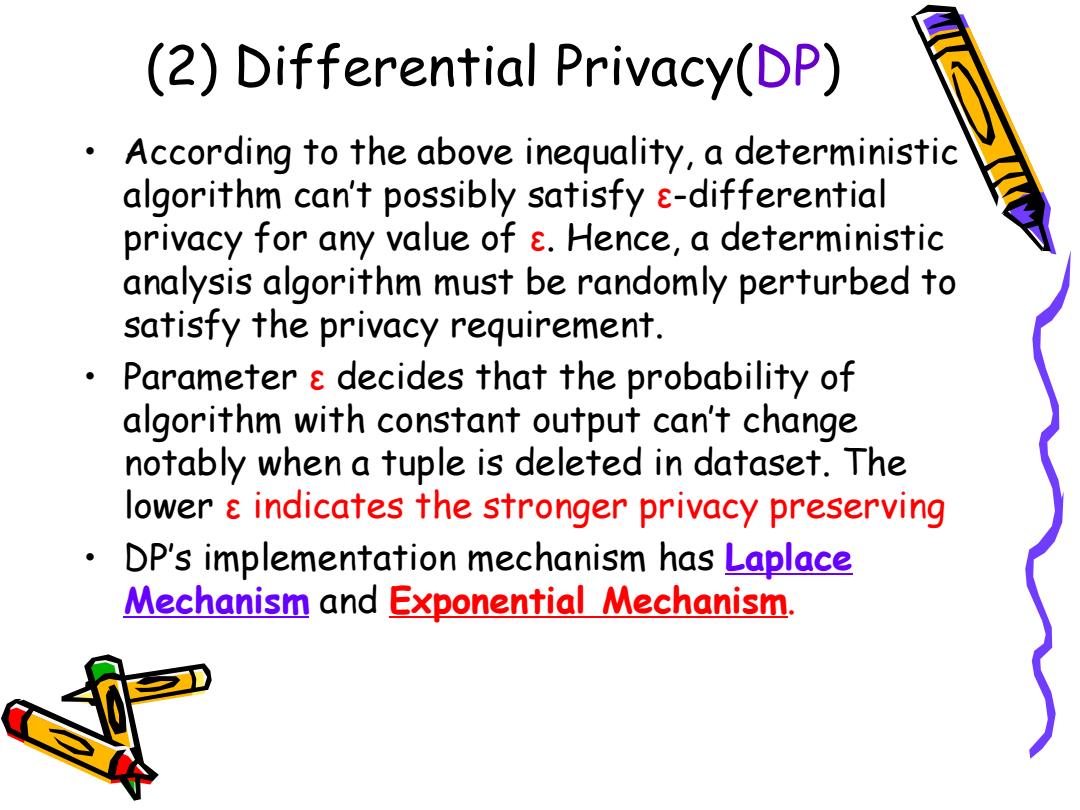
(2)Differential Privacy(DP) According to the above inequality,a deterministic algorithm can't possibly satisfy s-differential privacy for any value of s.Hence,a deterministic analysis algorithm must be randomly perturbed to satisfy the privacy requirement. Parameter decides that the probability of algorithm with constant output can't change notably when a tuple is deleted in dataset.The lower s indicates the stronger privacy preserving DP's implementation mechanism has Laplace Mechanism and Exponential Mechanism
• According to the above inequality, a deterministic algorithm can’t possibly satisfy ε-differential privacy for any value of ε. Hence, a deterministic analysis algorithm must be randomly perturbed to satisfy the privacy requirement. • Parameter ε decides that the probability of algorithm with constant output can’t change notably when a tuple is deleted in dataset. The lower ε indicates the stronger privacy preserving • DP’s implementation mechanism has Laplace Mechanism and Exponential Mechanism. (2) Differential Privacy(DP)
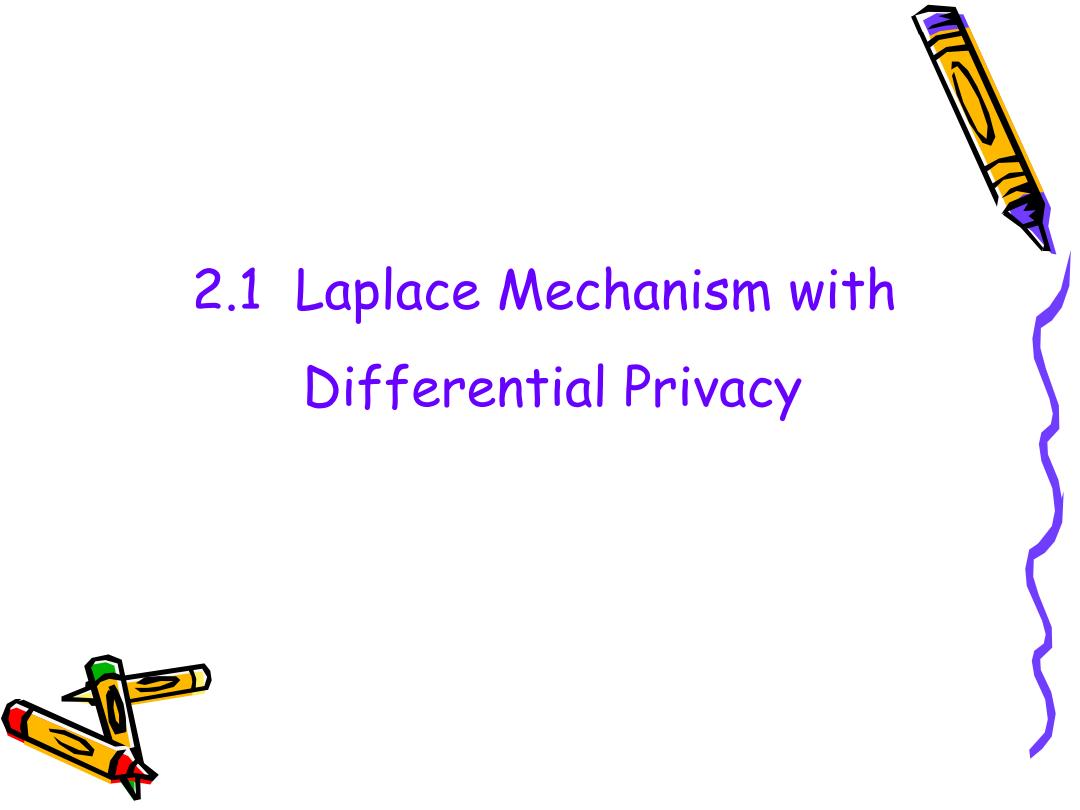
2.1 Laplace Mechanism with Differential Privacy
2.1 Laplace Mechanism with Differential Privacy